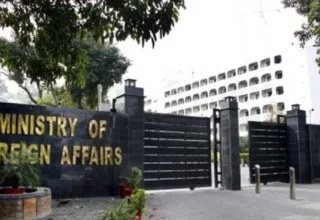
CHINA ECONOMIC NET
BEIJING – After successfully defeating the epidemic of novel Coronavirus, China’s bustling daily life that had badly affected due to Coronavirus (Covid-19) since January this year, has restarted showing signs of normality with steady and gradual spell of restorations.
Embattling the harsh lockdown and soon picking up momentum from the resumption of work, China, the second largest economy in the world that is expected to account for more than 16 percent of global GDP in 2019, has sent ripples through its people as well as the international community.
Setting aside hotbeds of COVID-19, at least 40-50% of areas inside China where new cases ebbing and those who remained safe from the epidemic, are returning to routine life.
Streets are echoing with footfall, and roads are buzzing slowly but ceaselessly. Shopping plazas are opening up to welcome visitors. Observing few cautions, people have resumed socialization.
Roads that had been presenting deserted looks, began to breathe quite better spotting uptick in vehicular traffic. Night illuminations that had gone dim, have been blooming again.
A number of factories and production lines are back to business. Some have switched on their operations and some are in the starting mode.
After easing out measures on commutation and quarantine protocols, people are less panic and have been enjoying their freedom to venture out to charge up their daily life.
In order to accelerate normalcy, China’s biggest factories are offering bonuses and other incentives to workers. Governments have been hashing out strategies for transportation through planes, trains and buses to facilitate people back to work.
Several days back, two city governments booked a charter flight so 170 workers could return from Hanzhong, in central China, to the trading hub of Yiwu. Another city in the same province, Taizhou, offered to reimburse all expenses companies spend on chartering buses and fast trains.
Shanghai and Beijing have also arranged special shuttle buses to bring workers back from the countryside.
Given the fresh outlook, arranged buses have been overflowing with people.
This is a good omen that on the call of Chinese President Xi Jinping, city administrations are catalyzing all measure to bring the life back to routine. So many people have been mustering courage to get back to work.
Low-risk areas should “resume full production and normal life”, President Xi pointed out, according to Xinhua, one of China’s official news agencies. About half of China’s counties have not reported any coronavirus cases yet, Zeng Guang, chief epidemiologist at the Chinese Center for Disease Control and Prevention, noted.
In Henan, home to one of the main factories where contract manufacturer Foxconn makes Apple’s iPhones, the provincial government has normalized quarantine requirements for workers and instructed officials to “aid Foxconn Technology Group’s Zhengzhou plant return to work.”
According to media reports, recently Yanjin County sent 131 health workers on six buses.
Xingyang City dispatched 740 workers on 23 buses. A police car escorted 36 buses with 803 workers onboard from Puyang to Foxconn.
Reports say that Foxconn recently increased its bonus for returning workers to Rmb 5,250 (about $747).
Rival contract manufacturer Pegatron, also an Apple supplier, has raised Rmb10,000 bonuses to attract temporary workers to its Shanghai branch.
Though the majority of large companies in seven key eastern provinces have already resumed production, small and medium-sized businesses still face challenges in terms of resumption.
The Hengdian Group, a large private enterprise in Zhejiang Province, has also resumed production in two of its factories in February after bringing employees from a subsidiary company – Hengdian World Studios, the world’s largest film and television production site that doubles as a sprawling theme park – to work on the assembly lines.
Employees who used to sell tickets at the theme park, are now sorting and packing Hengdian’s magnetic and lighting goods.
According to Chinese state media, over 1,000 studio workers were temporarily hired to help with factory production, including Apeloa Pharmaceuticals, another Hengdian subsidiary.








